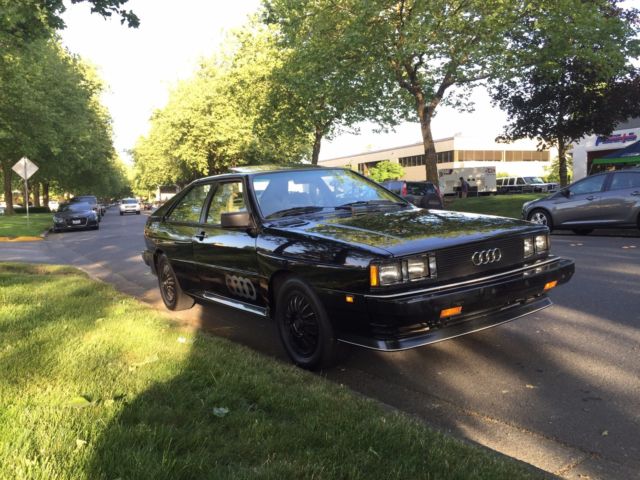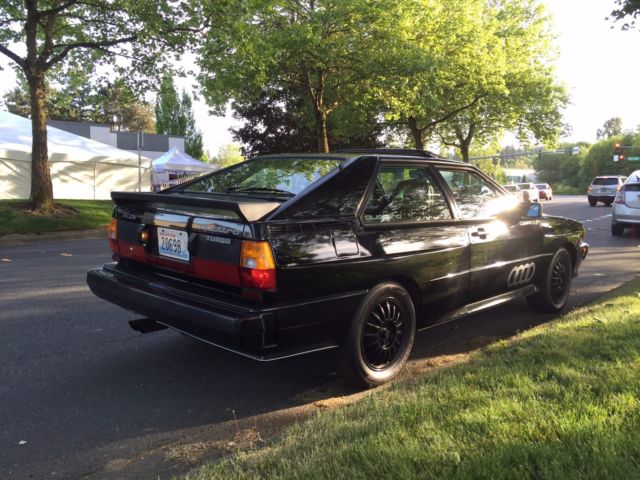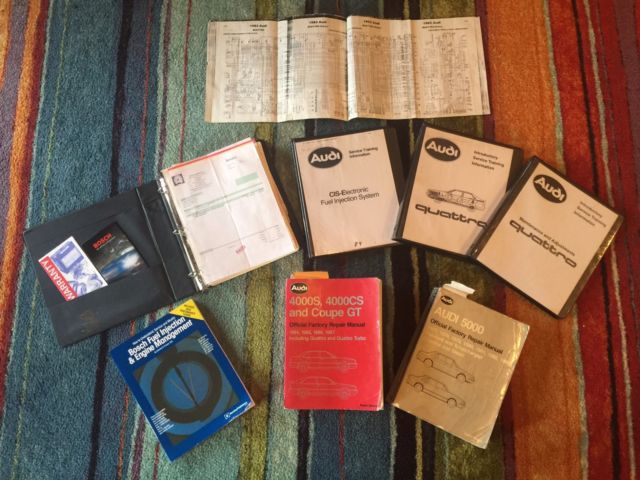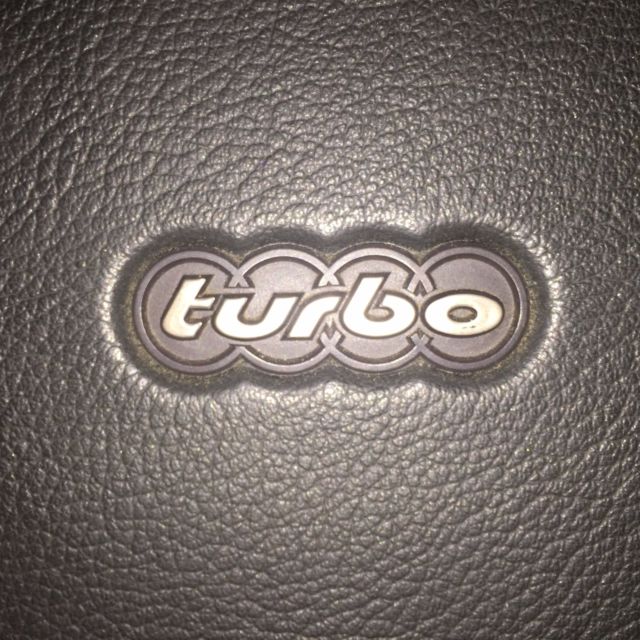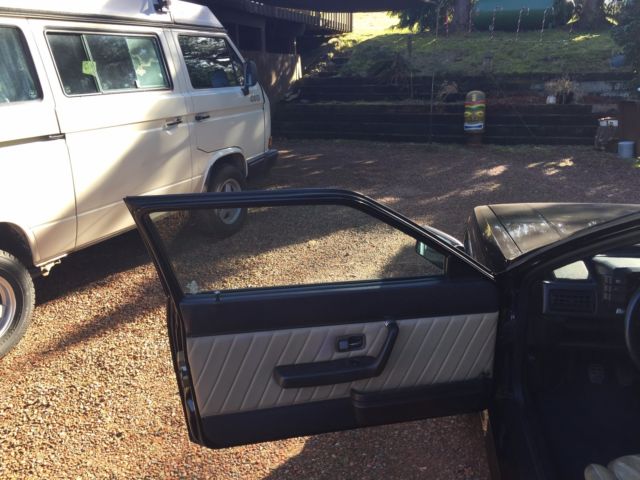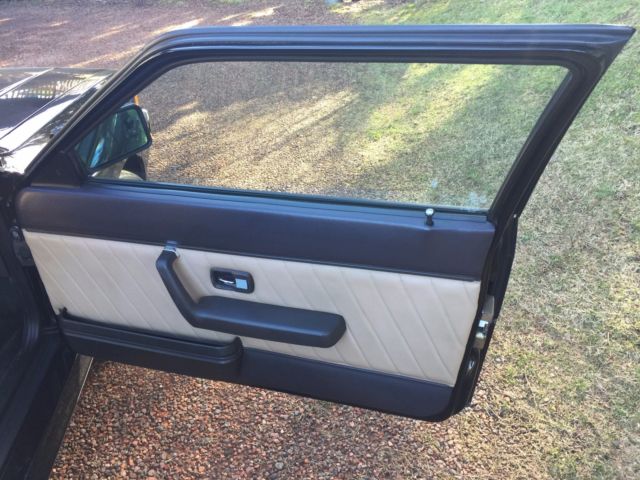1983 AUDI UR QUATTRO COUPE
- Make: Audi
- Model: Coupe Quattro
- Type: Coupe
- Year: 1983
- Mileage: 78,706
- VIN: WAUDC0851DA900329
- Color: Black
- Engine size: 5-cyl. 2144cc/160hp FI
- Number of cylinders: 5
- Power options: Air Conditioning, Cruise Control, Power Locks, Power Windows
- Fuel: Gasoline
- Transmission: 5 spd Manual
- Drive type: QUATTRO/AWD
- Interior color: Tan leather seats with dark brown dash & accents
- Safety options: 4 wheel disc brakes
- Options: 4-Wheel Drive, Cassette Player, Leather Seats, Sunroof
- Vehicle Title: Clear
- Interested?
1983 Audi Coupe Quattro Description
Time to sell the car I always wanted. It is a 'rare' beast and I'm sure if you are looking at the car you know the extensive history of the URQ's. History on the car...1st owner had it for 6 years, 2nd owner had it for 21 years, 3rd owner (myself) & I have owned it for 7 years. It was a California car most of it's life then moved to New Mexico where I purchased the car in 2010. There is absolutely 'no rust' on the car, accident free, original paint & interior in very nice shape for the age. Garage kept! It has tan leather interior w/out any rips or tears. I have documentation of repair history that totals over $27,000! The list is quite extensive, here is just a few of the things performed...- Valve job
- 2 Bennet radiator
- Diff actuators
- Master cylinder
- Timing belt
- Water pump
- Fuel filters
- Fuel pump
- Starter
- Battery
- Cross drilled front rotors
- Alternator
- New windshield
- Etc
Also, see this...MODEL OVERVIEW 0">1984 Audi Sport Quattro Coupe
Image is general in nature and may not reflect the specific vehicle selected.
History of the 1980-1991 Audi QuattroAudi was not the first to offer an all-wheel-drive sport coupe—Jensen briefly offered the FF in the late 1960s and early 1970s—but Audi brought the concept to the mainstream with the Quattro. They promoted it by successfully integrating all-wheel-drive into their main product line and subsequently dominating the world rally scene.Developed in the Scandinavian snow during 1977 and launched at the 1980 Geneva Motor Show, the all-wheel-drive Audi Quattro rewrote the rally books. In the Ur-Quattro's first appearance, (Ur is German for original), it was used as a course car to clear the roads in the 1980 Algarve Rally in Portugal. Had it been entered, it would have won by 30 minutes.
The car's aggressive good looks didn't translate to the inside, which looked almost identical to a 4000 sedan. Most U.S. cars had leather seats with diagonal pleating. The boost gauge and the differential control knob in the console were the only giveaways to the special nature of the car.
The Quattro inherited an acceptable rear seat from the ordinary coupe, but U.S. cars missed the updated single-lens headlights of the Euro cars, making do with four square sealed-beam units. Several Quattro enthusiasts retrofit the Euro lights and add a set of round driving lights.
The five-cylinder, 172 brake horsepower, DOHC turbocharged motor applied power to all four wheels evenly, through a brilliant center differential. The A1 and A2 versions of the Quattro coupe quickly dominated the World Rally Championship, winning three races in 1983 and five in 1984. In 1981, Audi driver Michele Mouton was the first woman to win a WRC rally, and won the Pikes Peak International Hill Climb in 1985.
For 1984, Audi developed the Sport Quattro S1 Group B rally car, which bore little relationship to the Ur-Quattros. The body was made of carbon-kevlar, the wheelbase was chopped 12.6 inches, wheels were wider and arches flared. Competition models produced 444 horsepower, while street versions made do with 302 horsepower. In all, 224 Sport Quattros were built, costing four times the price of the A1 and A2 Quattros, at 203,850 German Marks.
An even faster S1 E2 model was introduced in 1985, with competition cars producing over 500 brake horsepower, through a high-speed turbo that diminished turbo lag by utilizing a recirculating air system. The Group B rally cars gained even more outrageous bodywork with a sloped front spoiler, and huge rear wing to improve down-force.
After a string of accidents, the "Killer B" rally group was cancelled at the end of 1986, when it became apparent that even the best drivers couldn't keep up with these pocket rockets. The final versions of the S1 E2 used a "power-shift" gearbox, which is the forerunner of the DSG dual-clutch technology used today. At 591 horsepower and the ability to accelerate from 0 to 60 mph in 3.1 seconds, Sport Quattros are some of the most powerful rally cars ever built. For the Group B swansong, Audi driver Walter Rohrl took a 1986 team car to Pikes Peak in 1987, and swept the board.
Although considered relatively exotic when new because of its drivetrain, there is very little to the Quattro that seems exotic today. Like most early turbos, post-shutoff heat soak could cause oil to cook, which will ruin turbo bearings and impellers. New or rebuilt KKK turbos are shockingly expensive, and allowing a cool-down period of several minutes after a hard drive is advisable. Blown head gaskets are also a family flaw in Audi engines, and electrical issues and brake booster problems are common.
The short-wheelbase, high-horsepower Sport Quattro will always steal the limelight from its older brother, even though it wasn’t obtainable in the U.S. However, Ur-Quattros appeal to an emerging generation of collectors, and perfect examples are becoming more expensive. Vehicles that were used as daily drivers and now require a bit more work are still relatively easy to locate.
" ng-vm.trackHemmingsLink($event)" notouch="" hvt-set-active="vm.isActive">Audi was not the first to offer an all-wheel-drive sport coupe—Jensen briefly offered the FF in the late 1960s and early 1970s—but Audi brought the concept to the mainstream with the Quattro. They promoted it by successfully integrating all-wheel-drive into their main product line and subsequently dominating the world rally scene.
Developed in the Scandinavian snow during 1977 and launched at the 1980 Geneva Motor Show, the all-wheel-drive Audi Quattro rewrote the rally books. In the Ur-Quattro's first appearance, (Ur is German for original), it was used as a course car to clear the roads in the 1980 Algarve Rally in Portugal. Had it been entered, it would have won by 30 minutes.
Show All...1983 Audi Quattro Info- 0">
- Body Styles
- 2dr Coupe
- 0">
- Engine Types
- 5-cyl. 2144cc/160hp FI
- #1 Concours$65,000Condition #1 vehicles are the best in the world. The visual image is of the best vehicle, in the right colors, driving onto the lawn at the finest concours. Perfectly clean, the vehicle has been groomed down to the tire treads. Painted and chromed surfaces are mirror-like. Dust and dirt are banned, and materials used are correct and superbly fitted. The one word description for #1 vehicles is "concours."
- #2 Excellent$40,000
- #3 Good$27,500
- #4 Fair$13,800
- About Hagerty's Condition Ratings
- |
- About Our Prices
- 3 YEAR
- 5 YEAR
- ALL
| 1983 Audi Quattro |
|
| Technical Specs | ||||||||||||||||||||||||||||||||||||||||||||||||||||||||||||||||||||||||||||||||||||||||||||||||||||||||||||||||||||||
|
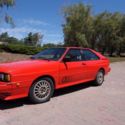 Original 1983 Audi Ur Quattro Turbo Coupe. One owner from new.
Original 1983 Audi Ur Quattro Turbo Coupe. One owner from new.
Mileage: 82,596
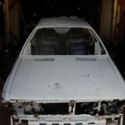 1983 Audi Quattro / UrQ / Original Quattro shell. Restoration Project.
1983 Audi Quattro / UrQ / Original Quattro shell. Restoration Project.
Mileage: 100,000
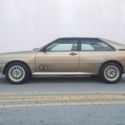 1983 UR Audi Quattro
1983 UR Audi Quattro
Mileage: 81,411
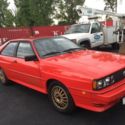 1983 Audi UR Quattro
1983 Audi UR Quattro
Mileage: 78,625
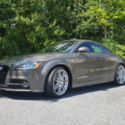 Audi TT Quattro 2012 Audi TT 2.0 TFSI Quattro S-Line Package Coupe, Dakota Gray
Audi TT Quattro 2012 Audi TT 2.0 TFSI Quattro S-Line Package Coupe, Dakota Gray
Mileage: 18,018
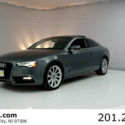 2dr Coupe Automatic quattro 2.0T Premium Plus Audi A5 2.0T Quattro Leather Sunro
2dr Coupe Automatic quattro 2.0T Premium Plus Audi A5 2.0T Quattro Leather Sunro
Mileage: 85,843
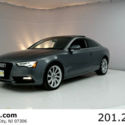 2dr Coupe quattro 2.0T Premium Plus Audi A5 2.0T Quattro Leather Sunroof used
2dr Coupe quattro 2.0T Premium Plus Audi A5 2.0T Quattro Leather Sunroof used
Mileage: 85,843
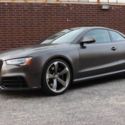 2014 AUDI RS5 COUPE QUATTRO S-TRONIC, AUDI CERTIFIED PRE-OWNED, LOADED!!
2014 AUDI RS5 COUPE QUATTRO S-TRONIC, AUDI CERTIFIED PRE-OWNED, LOADED!!
Mileage: 43,946
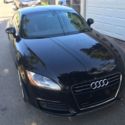 2008 Audi TT Quattro Coupe 2-Door 3.2L (V6) with Audi Magnetic Ride
2008 Audi TT Quattro Coupe 2-Door 3.2L (V6) with Audi Magnetic Ride
Mileage: 93,600
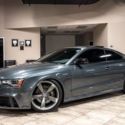 2013 Audi RS5 Quattro Coupe MSRP $75k+ Custom Exhaust System Audi MMI Navi WOW
2013 Audi RS5 Quattro Coupe MSRP $75k+ Custom Exhaust System Audi MMI Navi WOW
Mileage: 36,000
